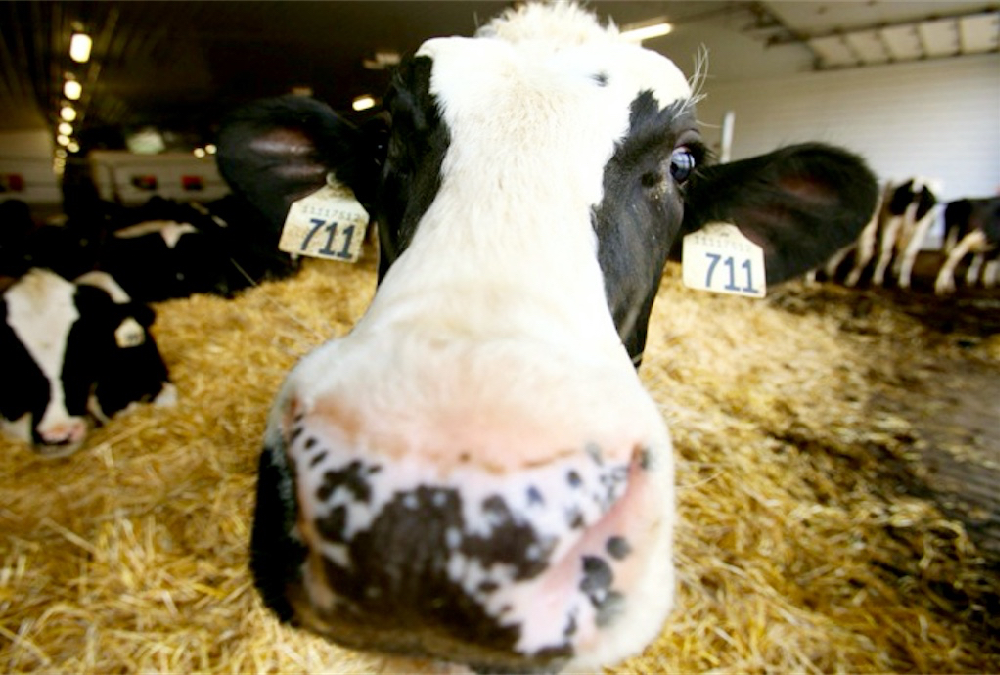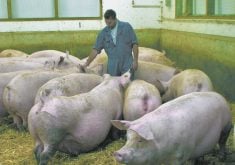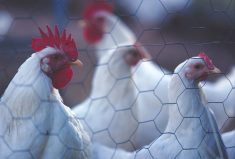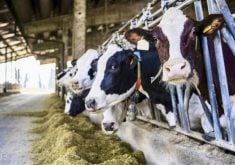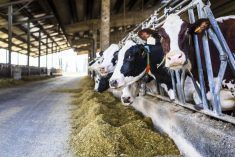The cost of feed for lactating and dry cows ranges by approximately 10 per cent of gross milk revenue. This provides opportunity for dairy farmers to increase profitability at the feed bunk.

“The balance we found was a range of 25 to 35 per cent of gross milk revenue being used to feed our lactating and dry cows,” said Candace Schiestel, dairy specialist with Archer Daniels Midland Company, ADM Animal Nutrition, at the 2019 Forage Focus Conference and Trade Show held recently in Stratford.
The range in feed costs is based on the analysis of data from numerous herds.
Why it matters: Continuously lower margins for dairy farmers requires finding opportunities for increased profitability by lowering costs. Changes in cost for feed provides such an opportunity.
Managing dry matter (DM) and dry matter intake (DMI), reducing the risk of compromised rumen health and understanding how to use forages over a whole year are key components.
Read Also

Canada seventh-most influential country on agri-food
Report from Dalhousie University and MNP shows Canada ranks seventh among G20 countries on agri-food influence.
Monitor DM and DMI regularly
Farmers are responsible for monitoring on farm dry matter, says Schiestel. It needs to be done and done often.
When the composition of dry matter within the forage changes it alters the entire total mixed ration (TMR).
“This costs money and increases risk of rumen health concerns,” says Schiestel.
It’s also important to ensure the TMR mixer is calibrated. Uncalibrated mixers can lead to inaccuracies farmers may not see.
When the forage is too wet, there is less in the ration and intake can be reduced.
“The cows are not able to consume as much as they would like to, so there’s an opportunity for empty bunk syndrome.”
Empty bunk syndrome creates gorging when cows are fed, increasing exposure to subclinical or clinical acidosis.
If dry matter intake is low, the more vulnerable cows have a higher risk of rumen acidosis, so measurements and adjustments are necessary. Wetter forage can alter the per cent of concentrate in the ration.
When the forage is too dry there is more dry matter and higher per cent of forage in the TMR leading to more refusal. High levels of refusals cost money — even when it is fed to the heifers, as happens on many farms.
Reduce the risk of compromised rumen health
Sorting, in which cows choose the tastiest and shortest parts of the ration and leave others, can lead to the risk of rumen health issues. Using a Penn State Shaker Box helps to analyze the chop length.
“Lots of long pieces give the cows lots of opportunity to sort. It can create some concerns that they are not actually consuming what we think they are consuming, or balancing what they consume,” says Schiestel.
As well, TMR that is too dry at feeding or that dries out over time can increase the risk of sorting.
TMR which dries out over time, high competition at the bunk and having mud inadvertently added can all lead to rumen health issues.
Pushing up feed regularly can help to lower risks of rumen challenges.
“When we still have lots of bare spaces, the feed has not been properly pushed up so some of the cows still can’t reach it — it has not been done effectively.”
The Penn State Shaker Box can help to identify TMRs with insufficient fibre.
When using the shaker box immediately after feeding, compared to 24 hours later, the refusals will be vastly different. Ideally the refusals would look the same as fresh feed.
“(Twenty-four hours later) there is a lot of fibre that has not been eaten by the cows – what is left in the top pan. Correspondingly, a lot less fines. This is a huge concern as cows are not consuming all the fibre that we thought they were going to consume,” Schiestel says.
Forages are handled a lot from ensiling, removal from storage and mixing in the TMR. This creates less physical effective fibre as each stage processes the fibre.
“We certainly can create a scenario where we don’t have enough physical fibre and depending on how much chemical fibre we have in that ration can (dictate) how risky of a situation that is.”
As well, freezing can have an impact on forage structure.
To reduce the heating of forage it’s advised to start with properly fermented forages, feed more often during the summer months, mix in the evening and use mould or yeast inhibitors.
Managing forages over a year
Forages have to sit in storage for a long period of time, and farmers only have the chance to make new forage during the summer. As a result, managing inventory, avoiding multiple forage changes and feeding fresh forage are factors in managing forage for the year.
Consistent inventory checks are important; do them regularly and update them, says Schiestel.
Variations in cow performance and milk components have been extreme in some situations with excessive forage changes and when feeding fresh forages; understand this is a risk.
The efficiency of filling the TMR is important.
“How many places across the yard are you needing to drive to fill your mixer? It can take a lot of man hours, a lot of tractor hours and you may have multiple tractors running. It can be quite an inefficient system.”
Schiestel suggests when considering a new feeding system to invite knowledgeable people to offer their opinion.
Bottlenecks can disappear when there are several people working on the same project.
“These are only some of the many areas that impact the amount of gross milk revenue that your farm uses to feed lactating and dry cows. Although all risk cannot be eliminated, applying these management practices will help to mitigate it.”




